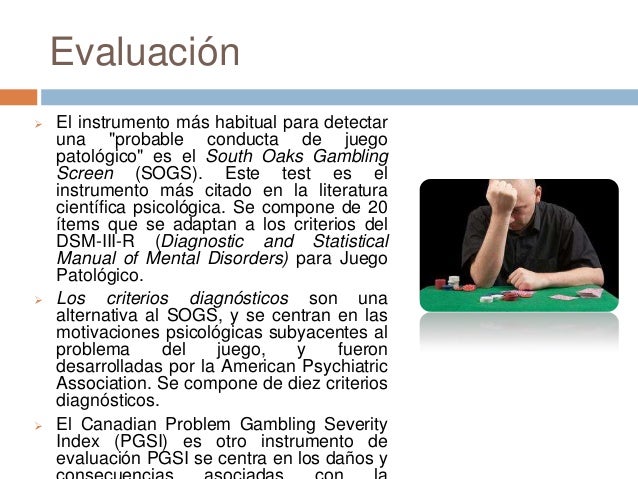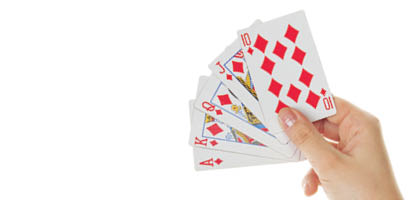Sogs Gambling Test
- The person carrying out the test should then mark it and give results there and then. It gives an idea about what level of development your child is age wise and shows their strengths and weakneses. For example our son was a year ahead on his visual skills but 6 months behind on gross motor.
- The Finnish version of the South Oaks Gambling Screen (SOGS) and a DSM-IV-based screen (Lesieur and Blume 1987;APA1994). SOGS includes 16 questions about problems associated with gambling and is used to measure the pathology of gambling. The total score on the SOGS ranges from 0 to 20 (higher values are indicative of worse psychopathologic.
- Oct 04, 2017 The South Oaks Gambling Screen: Take the Problem Gambling Test A report this week from Great Britain, where gambling and sports betting is more widely available and accepted than in the United States, shows a rise in people struggling with addiction on mobile devices.
- Despite widespread use, the South Oaks Gambling Screen (SOGS) has been criticized for excessive false positives as an indicator of pathological gambling (PG), and for items that misalign with PG criteria.
Feb 24, 2011 The person carrying out the test should then mark it and give results there and then. It gives an idea about what level of development your child is age wise and shows their strengths and weakneses. For example our son was a year ahead on his visual skills but 6 months behind on gross motor.

There have been a number of recent reports in the media which have suggested that the incidence of problem gambling in NSW has decreased by a significant amount. The basis of these claims is a comparison of two studies which were endorsed by the federal and state governments.
The Australian Productivity Commission in its 1999 report into Australia's Gambling Industry found that around 2.1% of the adult Australian (2.5% in NSW) population have significant problems associated with gambling, using the South Oaks Gambling Screen (SOGS) test. It found that around 1% of Australian adults have a severe gambling problem and a further 1.15% have a moderate problem.
The recent Prevalence of Gambling and Problem Gambling in NSW (PGPGNSW) study used the Canadian Problem Gambling Index (CPGI) and found that 0.8% of the NSW adult population are problem gamblers and a further 1.6% are considered moderate 'at risk' gamblers. Note that some of these moderate 'at risk' gamblers had self-excluded from gaming venues even though they didn't answer positively to enough questions to get into the 'problem gambler' category.
The two tests are different and look at different aspects of a persons gambling. The SOGS test is a comprehensive test, normally used by counsellors in treatment to determine whether the client is a problem gambler. The CPGI test is generally used for telephone surveys, is less comprehensive and only looks at the gambling habits of a person over the previous 12 months.

In addition, the recent prevalence study was half the size of the Productivity Commission, so it was less accurate. In fact the margin for error was plus or minus 2.2%.

Sogs Gambling Screening
The Productivity Commission combined people that have a severe gambling problem with those that have a moderate gambling problem to come up with its final percentage of 2.1%.
Sogs Gambling Assessment
Some groups have recently been quoted as saying that the PGPGNSW study has found that there has been a significant decrease in problem gambling in NSW. They have justified this by comparing the Productivity Commissions statistic to the PGPGNSW statistic. They have failed to mention that both studies use different instruments to measure the statistics. In fact, if you combine the problem gambling group with the moderate at risk group (as the Productivity Commission did by combining severe problem gamblers with moderate risk gamblers) the statistic is 2.5% of the NSW adult population - the same combined statistic for the NSW population in the Productivity Commission study.
Sogs Gambling Test 2020
Regardless of whether the two studies are comparable, both studies show is that a proportion of the adult population in NSW are at risk of developing or already have a serious gambling problem. As such, it is important that gaming venues continue to provide support to problem gamblers and their families through programs such as BetSafe.